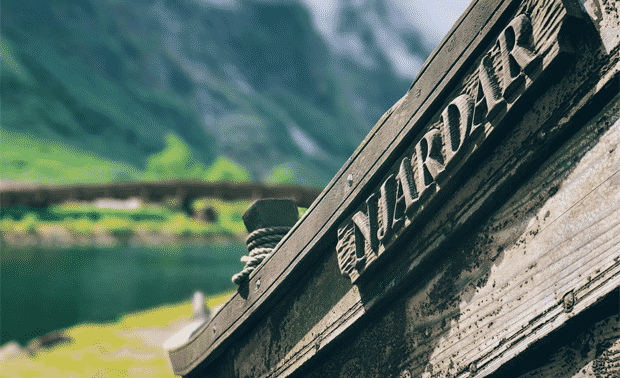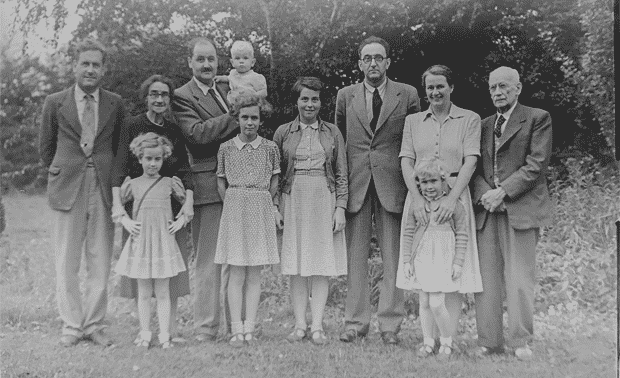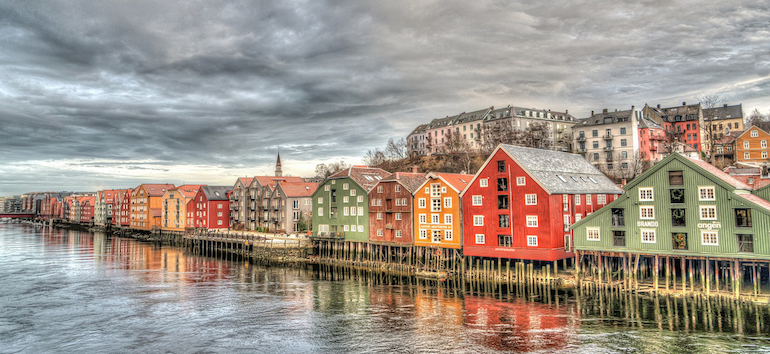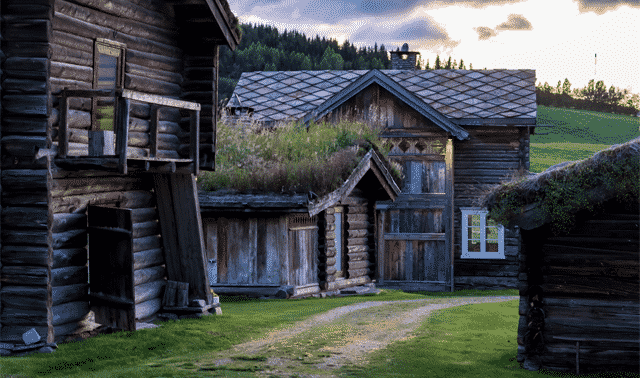Sign up for the Family Tree Newsletter Plus, you’ll receive our 10 Essential Genealogy Research Forms PDF as a special thank you!
Get Your Free Genealogy Forms
"*" indicates required fields

The first Scandinavian immigrants to North America came in Viking ships, captained by Leif Ericson, 1,000 years ago. But that early settlement of “Vinland” at L’Anse aux Meadows, Newfoundland, failed to take. The seafaring Scandinavians abandoned the New World and didn’t return for more than 600 years, giving an Italian latecomer named Columbus the chance to hog the credit for their discovery.
Despite the failure of Vinland, Scandinavian-Americans have plenty to celebrate. Today almost 11 million Americans trace their ancestry to Sweden, Norway, Denmark, Finland or Iceland, making Scandinavians collectively the fifth-largest European heritage group. A greater percentage of the population of Norway and Sweden emigrated to the United States than that of any country besides Great Britain.
From Chicago to Seattle, through Minneapolis (and Garrison Keillor’s mythical Lake Wobegon) and the Great Plains, Scandinavians laid the rails and broke the sod in America. Among the many who helped shape their new country: Charles Lindbergh, Victor Borge, Knute Rockne, reformer Jacob Riis, Eric Sevareid, Greta Garbo, Gateway Arch architect Eero Saarinen, Chief Justice Earl Warren, “Linux” programmer Linus Torvalds, Carl Sandburg, Walter Mondale… and even the first “president of the United States” (under the pre-Constitution Articles of Confederation), a Swede named John Hanson.
Latterday “Vikings” hoping to explore their heritage will find some advantages not enjoyed by many other ethnic groups. The conscientious Scandinavians have kept excellent records, which have been mostly spared the ravages of Europe’s wars. Almost everyone for centuries belonged to the state Lutheran church, which maintained voluminous parish registers. And many Scandinavians today speak and write English.
On the other hand, in some ways these were relatively backward, largely agricultural countries on the cold and remote northern edge of Western civilization. Sweden wasn’t Christianized, for example, until almost 900 years after Rome. The slow northward march of progress affects the historical records: Don’t expect to trace your family back beyond the mid-17th century in much of Scandinavia.
(Truly isolated Iceland is a special case. A genetic-research company, Decode Genetics, is developing a database of all known Icelanders for the past 1,100 years, which eventually will include more than 700,000 individuals — half of all the people born in Iceland since its settlement in 874.)
1. Start at home
As in all genealogy, success begins at home. “Do your homework,” advises Christopher Rumbaugh, who coordinates the Finland page for the WorldGenWeb genealogy project. “Get as much information about your ancestors as you can from living relations and family papers. Then and only then should you attempt to tackle the microfilm.”
“Resist the urge to jump headfirst into the sources,” adds John Follesdall, creator of Ancestors from Norway. “Take the time to read background information. It will save you a lot of headaches.”
Once you’ve interviewed your relatives, combed your family archives and grounded yourself in your heritage, tap the vast resources of your local FamilySearch Center. These centers — more than 3,400 across the country and around the globe — let you access the records on more than 2 billion people at the Church of Jesus Christ of Latter-day Saints’ FamilySearch Library in Salt Lake City. You can also search many of these records on FamilySearch.org.
2. Retrace immigrants’ routes
Next you need to try to find the link between your Scandinavian-American ancestors and your roots across the Atlantic. Leif Ericson’s crew aside, the first Scandinavian immigrants to America were Swedes (and some Finns) who established a colony in Delaware in 1638, not long after the Pilgrims landed at Plymouth Rock; “New Sweden” was lost to the Dutch in 1655, however. Norwegians began emigrating in 1825 and soon the Norway Emigrant Museum, will commemorate that 200th anniversary (to learn more, see https://utvandrermuseet.no/en/2025).
But chances are that your Scandinavian ancestors came to America in one of the great waves of immigration from roughly the 1840s to the 1920s. When (as a Swedish poet put it) “peace, vaccination and potatoes” caused the population of the mostly rural Scandinavian countries to explode — unchecked by war, smallpox and malnutrition — the boundless frontiers of America beckoned. Governments encouraged emigration, and the United States was depicted as a land of milk and honey — as the Danish writer Hans Christian Andersen described it in 1836: “Ducks and chickens raining down, geese land on the table.”
Pushed by subsequent crop failures and pulled by the Gold Rush of 1849 and the Homestead Act of 1862, the trickle of Scandinavians to America became a flood. Jobs laying railroads across the growing nation also beckoned. US railroad tycoon James J. Hill once boasted, “Give me snuff, whiskey and Swedes, and I’ll build a railroad to hell.”
Some historians have characterized this 19th-century immigration era as the dividing of the Scandinavian people into two branches — one in Europe, one in America. Today, for example, the number of Americans of Norwegian descent almost equals the population of Norway.
Peak periods for US immigration varied by country:
- Sweden, 1850-1920
- Norway, 1836-1920
- Denmark, 1870-1905
- Finland, 1899-1914
- Iceland, 1874-1914
Original passenger lists for these periods are housed at the National Archives in Washington, DC. You can find 19th-century passenger lists online at Ancestry, FamilySearch and MyHeritage. Canadian passenger lists from 1865 on are available through the National Archives of Canada in Ottawa.
Scandinavian emigration records were typically kept by the police. In Denmark, these archives from 1869-1904 are digitized. Norwegian police emigration records date from 1867 and most of those, along with other emigration records, can be found at the Digital Archives of the Norwegian National Archives.
Records of passports and passenger lists from Finland are available online at the Migration Institute of Finland.
In Sweden, parish ministers were required to report annually on emigrants. These records, along with passenger lists, can be accessed at ArkivDigital. Indexes, which include names of emigrants from Sweden, are available at Ancestry and MyHeritage.
3. Get the name right
To trace your roots back in Scandinavia, it’s crucial to know your ancestor’s correct name in the old country. That’s not quite as simple as it sounds.
“One of the hardest things for people to realize is that the name of their ancestor in the US is not necessarily the name they used in Norway,” says Linda Schwartz, who coordinates the WorldGenWeb site for Norway. “Thus they spend a lot of time searching for someone who didn’t exist in Norway.”
For centuries throughout Scandinavia it was common to take your last name from your father’s first name (“patronymic” naming): If your father’s first name was Magnus, in Sweden your last name would be Magnus-son (or Magnusdotter, for Magnus’ daughter, if you were female). Families in Norway and Denmark also took the father’s name for the surname, adding –sen or –datter. The permanent surname, passed on from one generation to the next, that we take for granted didn’t become official until 1901 in Sweden and 1923 in Norway, and patronymics persist in Iceland.
Other names came from the land. Norwegians often used a second last name, which might change depending on the farm they were working: Your ancestor might be Olav Petersen Dal while he was on the Dal farm, but Olav Petersen Li after he moved to Li.
Still other names were changed in the military and may or may not have been changed back. So my Swedish relative John Magnus-son, for example, chose the last name Fryxell to differentiate him from all the other Mag-nussons in his barracks. When he and his brother came to America, the immigration officials told them it was a bad idea for brothers to have different last names, so we all became Fryxells.
Changing your name in America was common. The Danish Johansen, Jorgensen and Jensen families might all have become Johnsons. Schwartz says, “My great-grandfather’s Norwegian name was Mens Arntsen from the Skaarvold farm, but he became Mike Score in the US. His cousin Ole Johnson from Gunhildsoien farm also took the surname Score in the US.”
4. Identify your ancestor’s parish
Not only is Scandinavia overwhelmingly Lutheran, the Lutheran church is actually to varying degrees the official state church. That means many of the vital records you might expect to be handled by the government have historically been kept by the church. So the key to tracing your ancestors back in Scandinavia is knowing the name of their church parish.
Identifying the parish can unlock a wealth of scrupulously maintained records dating back centuries. In Finland, for example, “church books” began keeping vital records in 1686, though most surviving records begin about 1735. You’ll also find valuable information in communion books (nppikirjat), where Finnish pastors recorded not only their parishioners’ mastery of the faith but also family relationships and events. Parish records in Denmark began in 1573, though few survive from prior to 1660; all parish records from 1814 were kept in duplicate and copies were not allowed to be kept under the same roof overnight, so these are complete. From 1815-1874 Danish churches also recorded who arrived and who left the parish. Norwegian parish registers (kirke-boker) may go as far back as the 1600s, but most begin in the 1700s; they were standardized about 1800.
Sweden, where the government didn’t start keeping its own vital records until 1950, is perhaps the most extreme example of the importance of parish records (kyrkoböcker). There, the church laid down regulations for records in 1686, though many parishes had already begun keeping records. Printed forms were introduced in the 1780s, when the parish lists began doubling as official population registers. Conveniently for genealogists, churches kept special records of anyone moving in or out of a parish. You may also be able to learn more about your Swedish ancestors from the records of the annual “questioning” (husförhörslängd) that tested parishioners’ knowledge of the church and the Bible: These listed all the farms in the parish, with names and vital statistics about everyone living there, and even included personal notes (fräjd) from the pastor about these members of his flock.
Many Scandinavian church records have been digitized and are widely available online.
5. Explore other records
Besides parish records, Scandinavian countries have census, property, probate, military and other records that can help fill in the gaps in your family tree.
Census lists can be particularly useful for finding Danish ancestors. The earliest Danish censuses date from 1787, 1801, 1834 and 1840; from 1845 on, censuses were taken every five or 10 years and included each person’s place of birth. You can most Danish census lists online at the Danish Demographic Database.
Norway also has excellent archives of its censuses (1664-66, 1701, mid-1700s, 1801, 1815 and every 10 years thereafter through 1875). Many of these censuses can be searched online via the Digital Archive.
Swedish Household Examinations, which are like yearly census records and date to 1652, can be a useful supplement to church records. Many of these have been microfilmed and can be accessed through your FamilySearch Center. Examinations from 1880-1930 can be searched at FamilySearch and an index of Examinations from ca. 1800-1947 can be searched at MyHeritage.
Other types of records that can help in your research include probate and estate records, military and conscription records (especially in Denmark), land records (Norway) and city directories (Sweden). Many of these resources are available from FamilySearch and MyHeritage.
6. Decipher your discoveries
Even though Scandinavians are among the most English-speaking of European peoples, of course they keep their records in their own languages. All the Scandinavian languages are related except for Finnish, which is related to Estonian and distantly to Hungarian. And there are linguistic overlaps: Swedish is also an official language in Finland and records there were kept in Swedish until the early 1800s. Prior to 1915, most Norwegian records were written in a language that’s actually closer to written Danish.
All written Scandinavian languages employ extra letters beyond the 26 of our alphabet, such as Å, Ä and Ö (Swedish) or Æ and 0 (Danish and Norwegian, plus A in recent usage). These are usually alphabetized at the end, following Z. Icelandic is the only one with extra consonants, which stand for the two pronunciations of th (as in thing and as in them).
You can find dictionaries of each Scandinavian language on the Web. The The FamilySearch Research Wiki provides guides to commonly used words in genealogy in Danish, Swedish, Finnish and Norwegian.
Foreign handwriting can also be a challenge. Until about 1900, the Danish used a style known as the “German hand.” Pre-1800 Norwegian records are likely to be in Gothic script.
But the rewards of discovering your Scandinavian roots are well worth overcoming such challenges.
“When a people becomes interested in its past life, seeks to acquire knowledge in order better to understand itself, it always experiences an awakening of new life.”
Norwegian-American author Ole Rolvaag
A version of this article appeared in the August 2000 issue of Family Tree Magazine. Last Updated June 2023.
Take your Scandinavian research to the next level with The Family Tree Scandinavian Genealogy Guide! Highlights include:
- Strategies for identifying immigrant Scandinavian ancestors, plus how to trace them back to Europe from North America
- Methods for locating Swedish genealogy records, Norwegian genealogy records, or Danish genealogy records within your family’s town of origin
- Detailed guides to finding and decoding common Scandinavian records, including: church records, civil registration records, census returns, property deeds, military records, and many more
- Quick guides to Scandinavian history, geography, and language
- Historical timelines, sample records, and resource lists that will bring your family history to life
FamilyTreeMagazine.com is a participant in the Amazon Services LLC Associates Program, an affiliate advertising program designed to provide a means for sites to earn advertising fees by advertising and linking to Amazon.com and affiliated websites.
ADVERTISEMENT





